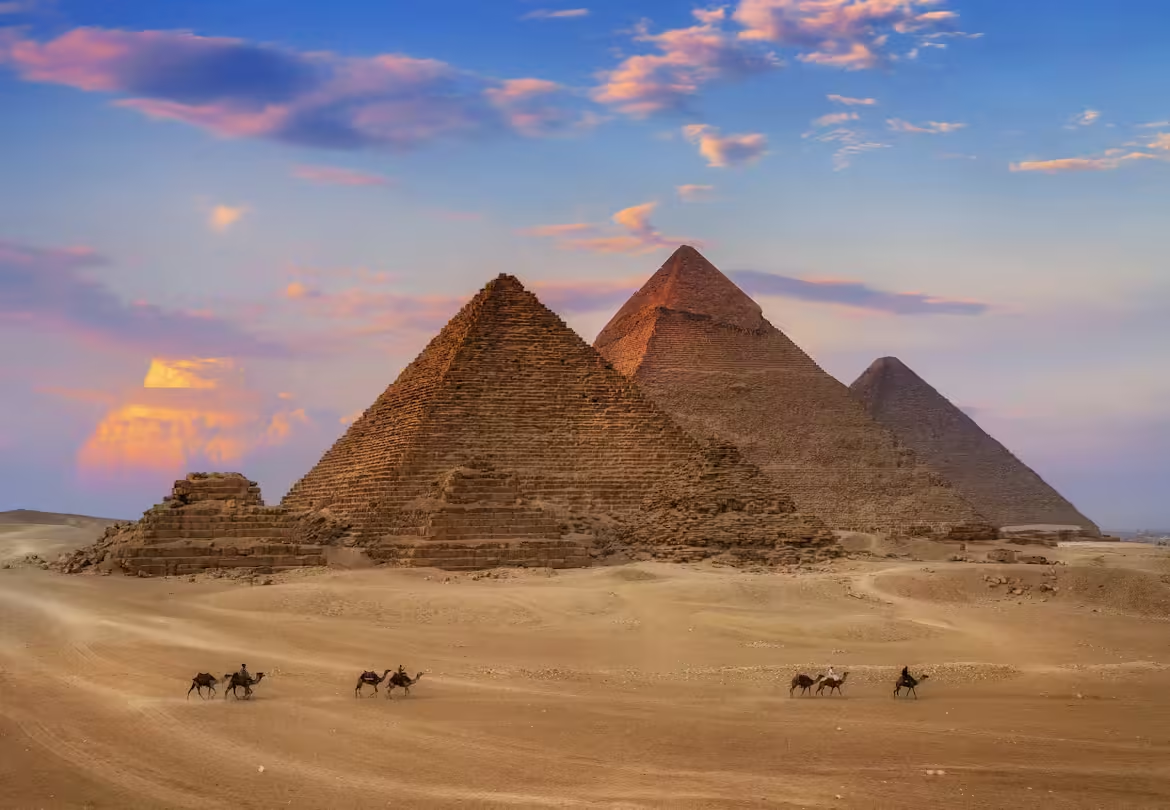The Great Pyramid Of Giza: A Marvel of Ancient Engineering
The Great Pyramid of Giza, located on the Giza Plateau near Cairo, Egypt, is an architectural and historical marvel and the oldest of the Seven Wonders of the Ancient World. Built for Pharaoh Khufu (Cheops) around 2580–2560 BC during the Fourth Dynasty of the Old Kingdom of ancient Egypt, it is the largest pyramid in Egypt and was the tallest man-made structure in the world for over 3,800 years.
Historical Context
The Great Pyramid was constructed over a 20-year period, which is a testament to the Egyptians’ engineering prowess and organizational skills. Historians believe that it was built as a tomb for Pharaoh Khufu. It originally stood at 146.5 meters (481 feet) but now rises to 138.8 meters (455 feet) due to the loss of the outer casing stones. The pyramid’s construction involved millions of limestone blocks, each weighing an average of 2.5 tons, with some weighing as much as 15 tons.
Architectural Significance
The pyramid’s precise alignment, with its sides closely oriented to the cardinal points of the compass, showcases the Egyptians’ advanced understanding of astronomy and geometry. The internal structure of the Great Pyramid is equally fascinating. It features a series of chambers, including the King’s Chamber, the Queen’s Chamber, and the Grand Gallery. The purpose and method of construction of these chambers remain subjects of debate and awe.
Theories of Construction
The exact methods used in constructing the Great Pyramid remain one of archaeology’s greatest mysteries. Various theories have been proposed, including using a straight or circular ramp and, more recently, theories suggesting that the blocks were transported on sleds lubricated with water. The workforce likely consisted of tens of thousands of skilled laborers, including stone cutters, laborers, and engineers, who were well-fed and housed in nearby workers’ camps.
Cultural and Astronomical Significance
The Great Pyramid and its counterparts are believed to be aligned with celestial bodies. The pyramid’s sides align with the stars of Orion’s belt, which, according to some theories, reflects the Egyptians’ religious beliefs about the afterlife. Pharaohs were thought to become gods in the afterlife, and the pyramid’s grand scale and orientation with the cosmos underscored their divine association.
Current State and Tourism
Today, the Great Pyramid of Giza attracts millions of tourists annually. It symbolizes Egypt’s rich history and a pinnacle of ancient human achievement. In addition to being a significant draw for tourists, the pyramid is an essential focus of ongoing archaeological research and conservation efforts aimed at preserving its structure and unraveling more of its secrets.
This iconic structure remains a focal point for historical and architectural studies. It remains a profound inspiration for people worldwide, highlighting ancient Egypt’s ingenuity and mystical allure.



